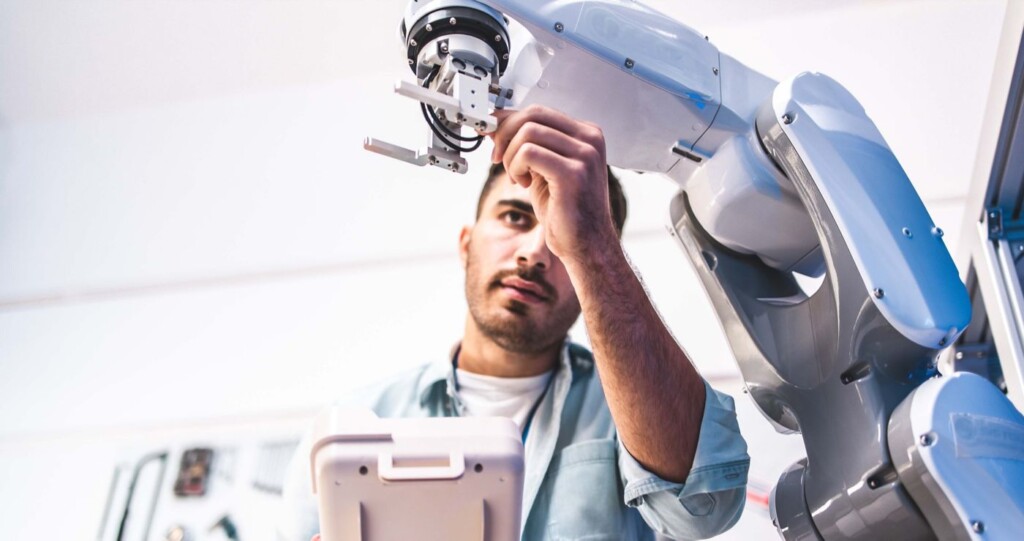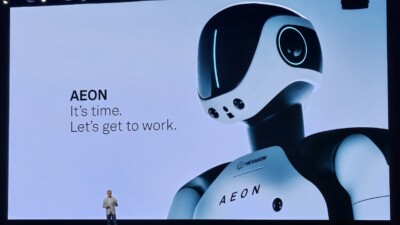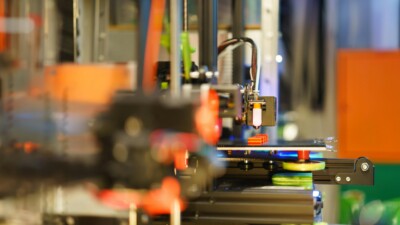Over the course of a year, Tata Consultancy Services and MIT Sloan Management Review studied AI's strategic role in manufacturing.

New research is showing us how AI is being deployed in the manufacturing sector, and the results are not exactly what you would expect. Tata Consultancy Services (TCS), a global IT consulting firm based in Delhi, in collaboration with Boston-based MIT Sloan Management Review (MIT SMR), say their research shows the role of AI is across enterprise workflows from automatically handling the simple repetitive decisions to improving the entire decision making environment for company leadership.
“This shift is not just about improving processes—it is about empowering people to make better choices and building adaptive, future-ready manufacturing enterprises equipped to thrive in a changing world,” says Anupam Singhal, president of the manufacturing practice at TCS.
The study examines how global organizations are integrating predictive and generative AI to aid decision-making and gain a competitive edge and drew insights from experts and pioneers at manufacturers such as Cummins, Danaher, and Schneider Electric.
The report states AI is moving from a simple advisory role to more of a business architect, improving the quality of options available for decision-making rather than just optimizing processes.
This new paradigm is powered by intelligent choice architectures (ICAs). These are dynamic AI systems that combine generative and predictive AI capabilities to create, refine, and present optimal choices for human decision-makers. In manufacturing, ICAs equip leaders with better choices for driving measurable outputs and outcomes in performance, quality, and innovation.
“ICAs flip the script. They do not just learn from decisions — they learn how to improve the environment in which decisions are made. That’s not analytics, that’s architecture,” said Michael Schrage, MIT Sloan Research Fellow and a co-author of the report.
The research highlights how ICAs address key manufacturing challenges in each of these differing manufacturing environments.
Cummins is exploring how generative AI can simulate extreme scenarios in powertrain design, demonstrating how ICAs can improve resilience and reduce time to market by testing against exponentially more scenarios than can be even conceived by human engineers.
At Schneider Electric, generative and predictive AI models enhance the specificity and reliability of predictive maintenance interventions, reducing uncertainty about when and where to perform maintenance.
Lastly, Danaher is deploying ICAs to transform decision-making across its mergers and acquisitions, product strategy, and innovation roadmaps. This includes supply chain optimization, where advanced analytics can lead to substantial savings.
The study goes on to identify four key imperatives manufacturers should consider when looking to build and enable more intelligent decision environments with ICAs, including:
Identify, curate, and emphasize value-driving data
Perfect data is a myth. What matters is generating better choices with available data. Companies must prioritize the critical data that delivers the most business value, enabling “frugal data cultivation” and accelerating meaningful outcomes.
Design with economic clarity and business purpose
Every ICA initiative must have a clear business purpose and stated, desired outcome. Projects should deliver measurable results, not just chase technological speculation. This, as the authors put it, ensures the “juice is worth the squeeze.”
Orchestrate for intelligence
ICAs must coordinate humans, AI models, and automated workflows to maximize throughput and decision quality. This transforms siloed decisions into integrated intelligence. The report shows evidence of this using anecdotes of Danaher’s “massively better output” and Cummins’s transformation of its federal bid evaluation.
Establish a pervasive presence
ICAs must become part of the everyday flow of work. Cummins demonstrates how connecting design, production, and service functions through ICAs unlocks cross-functional insights and drives operational efficiency. ICAs that exist outside normal workflows fail to deliver sustained value.
“This isn’t AI as co-pilot. This is AI and humans working together as architects to redesign how people perceive, weigh, and act on choices,” said David Kiron, Editorial Director at MIT Sloan Management Review.



